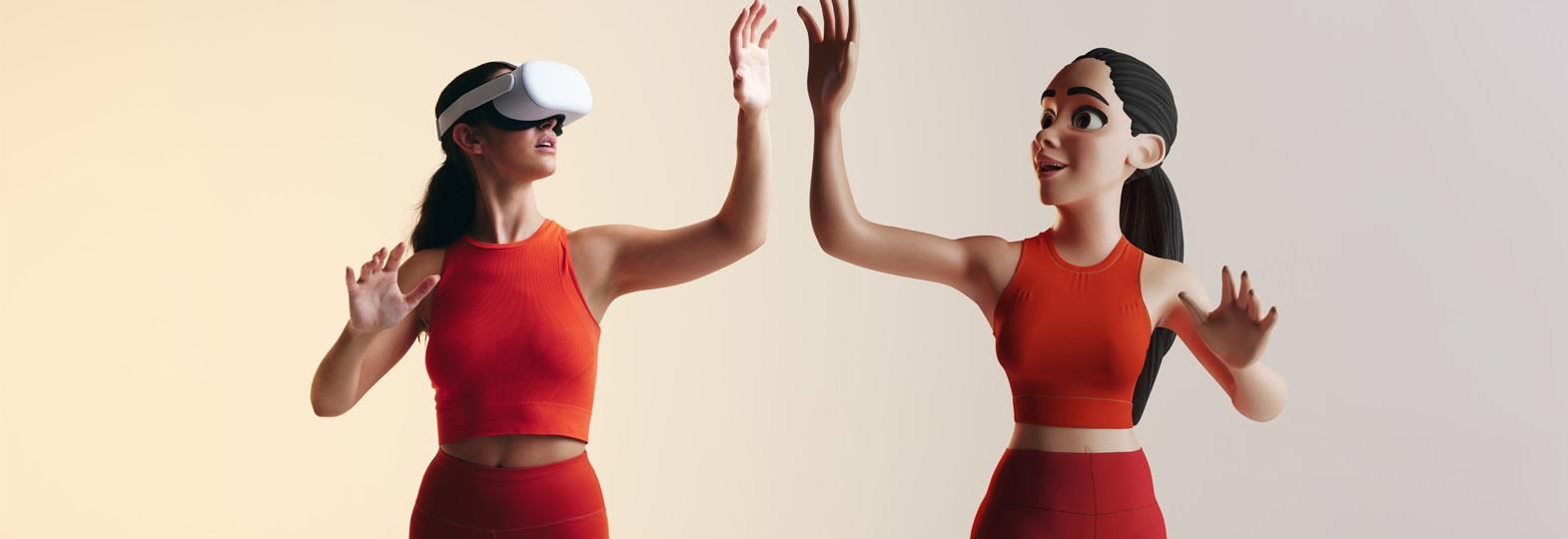Like many manufacturing sectors, footwear and apparel manufacturers are grappling with the challenge of how to cut production costs while increasing productivity and boosting profit margins. Additionally, with fashion accounting for approximately 10 per cent of the world’s annual carbon emissions1, sustainability goals are a major priority for the industry and its customers moving forward.
As a result, many enterprises are looking to technology-based solutions to address these needs while remaining competitive in the space. Enter: the digital twin.
What Are Digital Twins?
A digital twin is, “a digital representation of a real-world entity or system; an encapsulated software object or model that mirrors a unique physical object, process, organisation, person or other abstraction.”2 Simply put, in the world of apparel and footwear, a digital twin is a virtual replica of a physical garment, shoe or accessory.
Digital twins are more than just digital 3D models. Though 3D/AR renderings play a major part in the process, they also help collect and aggregate business information, simplifying back-end processes and allowing organisations to simulate real-world scenarios more effectively.
Benefits of Digital Twins for Footwear and Apparel
Apparel manufacturing is a complex process that involves multiple stakeholders and phases from ideation to finished product. Digital twins in footwear, accessories and apparel manufacturing can help companies become more agile, efficient and sustainable in their operations through:
1. Better Back-End Operations
The use of digital twins for information sharing and collaboration among all participants is possible and beneficial – manufacturers can use the same platform that designers are using to construct virtual prototypes to offer comments and ideas. These platforms can also be used to simplify the storage of vital product data such as colour, texture, fabric, pricing and sales numbers by syncing with PLM, DAM and/or PIM systems.
These SaaS-based tools are all cloud-based too, accommodating cross-team functions by allowing them to access the product info and virtual renderings needed at a moment’s notice, from wherever they are working. As a result, information is communicated more effectively and with fewer errors, resulting in more efficiencies and less time wasted.
2. Improved Sample Experience
More virtual product testing is being done for both B2B and B2C goods using digital twins. By using this technology, producers can evaluate more products, quicker than they could with physical samples. Case studies3 show that by implementing virtual product testing, manufacturers can turn around a product in 24-48 hours compared to the traditional 30-day timeline with physical testing.
With this knowledge in hand before investing in pricey materials such as dyes or fabric, manufacturers can produce better goods more cost-efficiently and with fewer wasted materials.
3. Reduced Costs
By lowering the need for physical prototypes and the associated costs, including labour and materials, digital twins can also assist apparel manufacturers in lowering costs. The use of digital twins can also cut down on the time and materials needed to make a garment by optimising the process and maximising the use of materials, helping to reduce waste as well.
4. Faster Time-to-Market
One of the biggest advantages of using digital twins is that it can help reduce the time it takes to bring a product to market. With the development of virtual prototypes, and the faster product sample turn-around, there can be less delay from sample to end-product. In addition, once a digital twin is created, it becomes much easier for manufacturers to simulate different scenarios, such as fabric and colour variations, so that designers can make more informed decisions at a faster pace. Merrell estimates digital twins increased speed to market by one month.4
5. Supports More Sustainable Practices
Digital twins contribute to more environmentally friendly actions. With the push to virtual samples, manufacturers can lessen the material waste produced. As mentioned before, virtual twins help to optimise the manufacturing process as well, which can cut down on energy use and greenhouse gas emission in addition to eliminating wasted materials.
6. Supports a Seamless Transition to B2C Sales
Though the process of developing and utilising digital twins begins with the design and manufacturing stage of the product lifecycle, the digital assets created during the process maintain their usefulness even after a product has moved to store shelves for consumers to buy.
For those selling their products online, 3D digital assets help to bring the in-store experience online for shoppers, allowing them to get a better understanding of how a shoe, handbag or article of clothing might look in person. This can help reduce return rates and increase customers confidence in the product ahead of checkout, boosting add to cart conversions as well.
In addition, digital twins make for great additions to digital advertising, bringing that same interactive, virtual experience to an ad. For brands looking to engage with the internet through new platforms like the metaverse and digital assets like NFTs, digital twins can prove to be useful resources.
To keep up with the ever-increasing demands of consumers in the highly competitive fashion industry, brands need to consistently find innovative ways to leverage technology to improve their efficiency and sustainability. This includes introducing approaches like digital twins to further bridge the gap between the physical and virtual product at every stage of development.








Comments